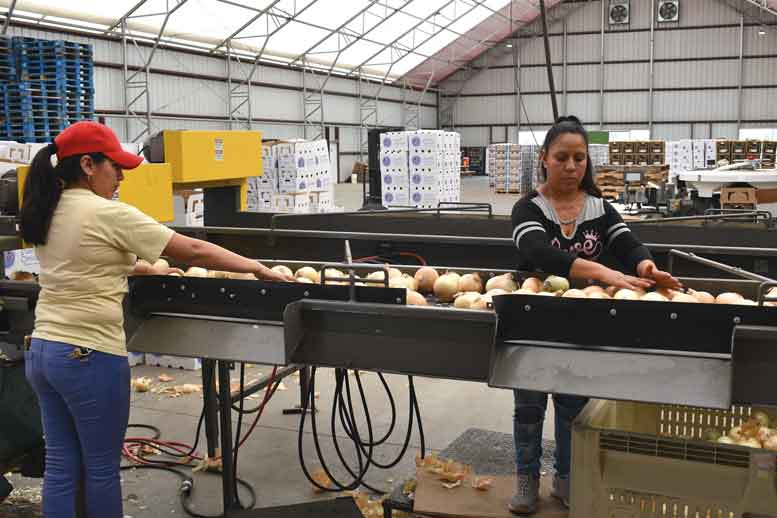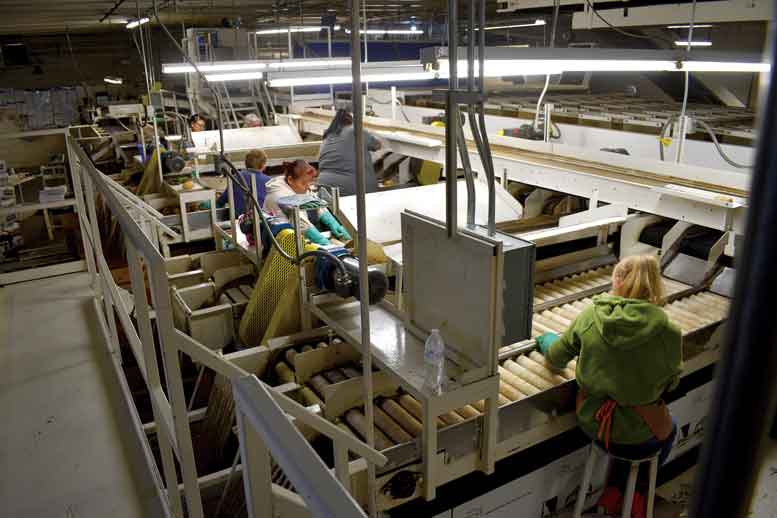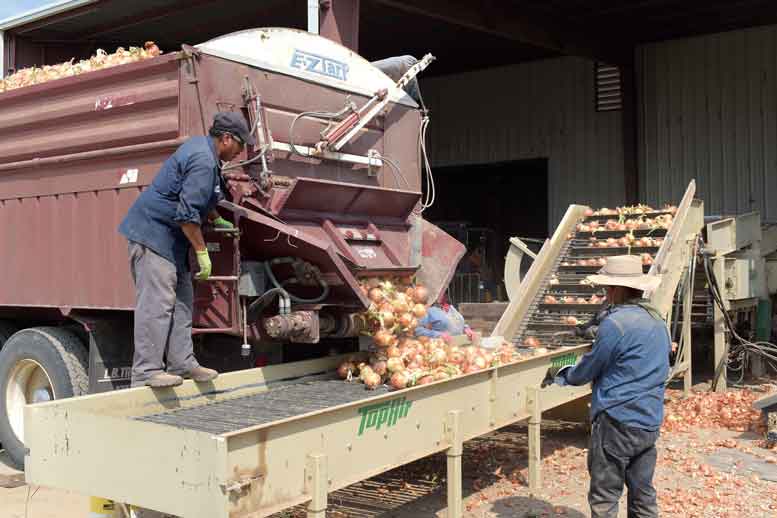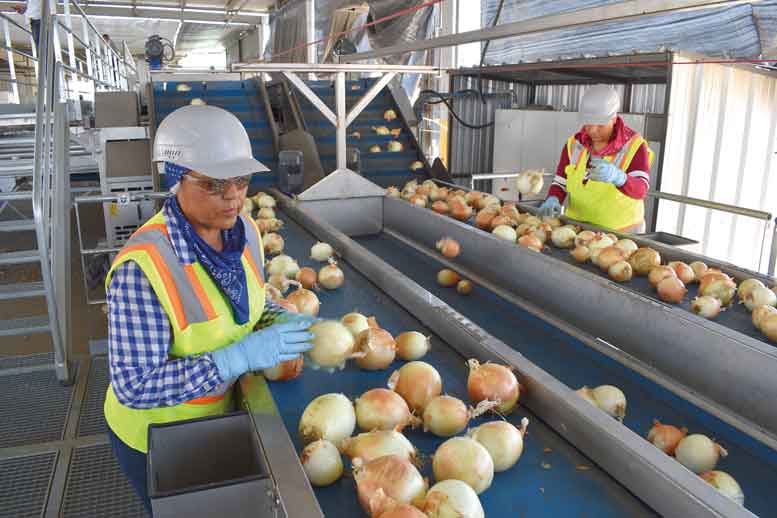|
Click to listen to this article
|
By Alexandra E. Hill, Assistant Professor of Cooperative Extension, Department of Agricultural and Resource Economics, University of California, Berkeley
Agricultural employers across the country are reporting too few qualified workers to meet their employment needs. There are no quick fixes for this problem. But in this article, I offer a variety of operational changes aimed at improving your ability to recruit, satisfy and retain an effective farm team. I will start with a few recommendations for effectively choosing and implementing these changes.

One Thing at a Time
Nearly all business owners and operators have laundry lists of possible changes that could increase profits, enhance social impacts, or contribute to other business and personal values. My first suggestion is to narrow this list. Choose one area to focus on and one to three specific changes within that area that you can commit to implementing. You can repeat this process once those changes are integrated in your operation. Implementing fewer changes at once is less burdensome and simplifies evaluating their effects. This will also help you prioritize your laundry list and take a strategic approach to improving your operation.

Know, Articulate Reasons for Change
Next, for each change you identify, understand and convey why the change is important. Is the change addressing a perceived or reported shortcoming of your operation? Are you hoping the change will reduce turnover? Making any change requires effort and perseverance, so it’s important to continue reminding yourself, management and employees why the effort is worthwhile.
After you have selected your changes, there are many actions that can improve their success. In general, I recommend that you train, reinforce, evaluate and troubleshoot. Most changes require trainings to ensure a smooth transition to the new system or norms. When possible, I recommend piloting the change with a small group of workers to inform your training needs. Next, you can encourage acceptance and support of the change with positive reinforcement or financial incentives. These might be bonuses or recognition for participating in trainings or exhibiting desired behaviors. Next, you should regularly evaluate the impacts of the changes on outcomes linked with your reasons for the change. Be sure to communicate your successes, identify shortcomings, and troubleshoot and adapt to address challenges along the way.
Armed with some ideas for effective change management, you might now want some inspiration for changes to support one of your business’s greatest assets – your team. I suggest three change areas for targeting your efforts and offer specific changes within each.

Communication
Effective communication is a key predictor of job satisfaction and retention. Communication is broad and involves different forms (for example, face-to-face, calls, texts or emails), different systems (for example, binders or online platforms) and different strategies (ranging from quietly listening to yelling). Accordingly, there are many potential communication changes that could streamline processes and operations, improve employee satisfaction and safety, and generally create a more enjoyable work environment.
Suggestions for new systems of communication include: pre-shift “huddles” to clarify daily objectives; post-shift “debriefs” to discuss daily challenges and identify solutions; direct grower-worker communication channels; shared task lists for management and teams; and systems for workers to file anonymous grievances or suggestions.
Suggestions for improving communication strategies include: trainings for management on conflict resolution and effective communication; no-yell policies; including communication policies and norms as part of the onboarding process; and when assigning employees with a new task, ensure they understand the importance and value of the task for their team, the business or broader society.
Total, Fair Compensation
A total compensation package consists of wages, salaries, bonuses, and benefits like health insurance or paid time off. Ensuring that total compensation packages are internally and externally equitable, and that workers perceive them as such, is vital for successfully recruiting, retaining and motivating high-performing workers. Are packages competitive with those offered by others in the industry and area? Are workers motivated to perform better or remain with your company longer by their potential for a better package?
Suggestions for creating attractive total compensation packages include: use structured pay and benefit scales that clearly link compensation to performance, experience or company tenure, and ensure workers understand them; create and explain pathways for raises and promotions; offer bonuses for behaviors that are valuable to your operation like individual or team productivity, company performance, retention (return, rehire or end of season) or making employment referrals; offer partial reimbursements for costs from commuting, childcare or work attire; and provide paid vacation and sick days for permanent and more tenured employees.

Work Environment
Many farm workers express appreciation for working outdoors, working alongside friends, feeling like their bosses care about their well-being and having flexible working arrangements so they can meet familial obligations. Improving the work environment can thus play an important role in attracting and retaining workers. Many aspects of the work environment are regulated, and while ensuring compliance with the ever-evolving legal landscape is critical, this should be the starting point. Striving to make your work environment stand out will bring you closer to becoming an employer of choice.
Suggestions to improve the work environment center around safety, organizational culture, flexibility and education. Develop safety trainings and procedures that address potential issues specific to your operation or workforce; coordinate teambuilding and worker appreciation events; offer workers reasonable flexibility in their scheduling so they can fulfill regular and emergency family needs; promote opportunities for learning at local community centers or community colleges; and offer workers incentives or vouchers to participate in educational activities.

Consider Unique Needs of Your Workforce
Finally, the suggestions I have offered reflect what I have learned from my own lived experiences, research, teaching and conversations. The best advice I can offer you is to identify and implement changes based on your own experiences and understanding of the specific needs of your operation. A vital starting point is conducting an honest personal assessment of your operation and using a survey to identify shortcomings from the perspective of your team. I highly recommend using anonymous surveys, structured and semi-structured focus groups, and regularly engaging in conversations with employees across your operation to identify areas for potential improvement. Of course, if you keep collecting information and never act, employees will become understandably frustrated. So be sure that you are able and willing to not only make changes, but to effectively communicate what they are and why they are being made, including explaining how employee feedback was used to identify appropriate changes.

